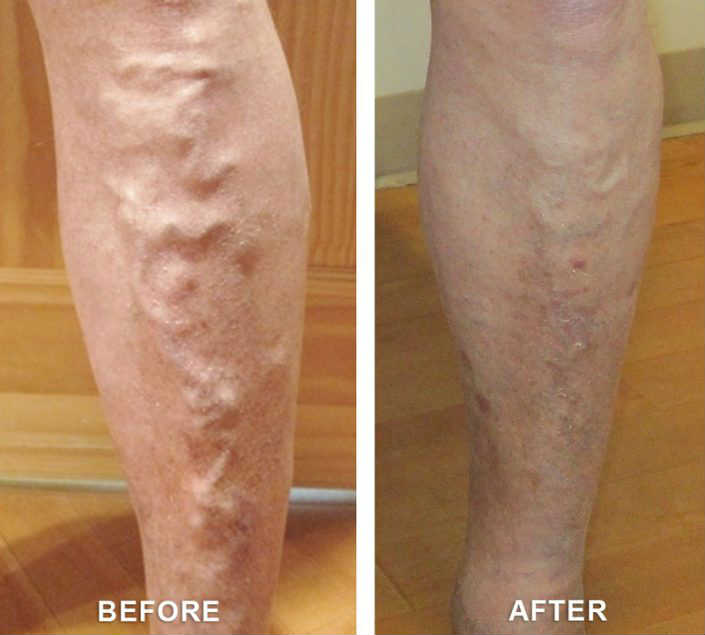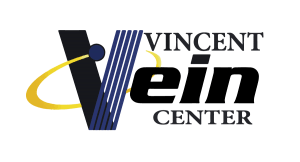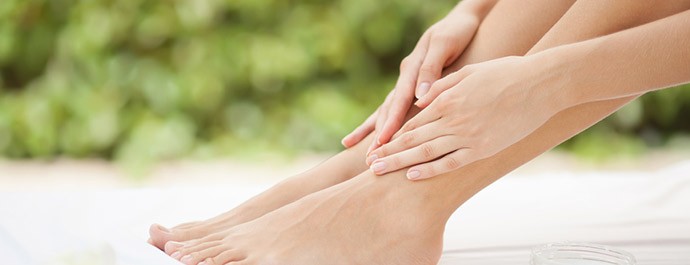Varicose Vein Procedures
Varicose Vein Treatment Goals
Varicose vein procedures and treatments begin with diagnosing how the disease affects you. Depending on the circumstances, whether they be through lifestyle or heredity circumstances, varicose vein procedures and treatments vary. First, the goal of varicose vein treatment is first to relieve you of any symptoms, such as aching, or itchy legs. Next, the goal is preventing future complications that if left untreated could cause serious physical injury. The final goal is to improve overall appearance of the affected areas. If varicose vein treatment does not provide the relief you need, varicose vein procedures would be the next step.
How to Treat Varicose Veins
 After determining the cause of your vein disease, there are two main things that can be done for treatment. The first method, which is usually the go-to treatment for varicose veins, is a lifestyle change. By scheduling a consultation with our vein doctor, we can determine what in your life could be causing the failure of your veins.
After determining the cause of your vein disease, there are two main things that can be done for treatment. The first method, which is usually the go-to treatment for varicose veins, is a lifestyle change. By scheduling a consultation with our vein doctor, we can determine what in your life could be causing the failure of your veins.
Lifestyle changes include:
Immobility: Avoid standing or sitting for long periods of time. When sitting, crossing your legs or keeping them still without elevation causes poor blood flow throughout your veins.
Exercise: Physical activities and improved muscle tone assist in helping your low-pressure veins pump blood easier.
Weight Loss: Blood flow is often weak and the pressure is hard on your veins if you are overweight or obese. Losing some weight can improve your blood flow again.
Shoes: Wearing shoes that do not hurt your feet can also be beneficial for varicose veins. Shoes, such as high heels, if worn for long periods of time can cause problems. As an alternative it is recommended to wear lower heeled shoes, which can help tone your calf muscles, in return helping blood move through the veins again.
Varicose Vein Procedures
The second method, which is recommend if varicose vein treatment does not provide you relief, is varicose vein procedures. Varicose vein procedures include either removing varicose veins or closing them entirely. Removing and closing varicose veins usually do not cause problems in the venous system. This is because blood will find other veins to travel through. Vincent Vein Center may not use all the varicose vein procedures mentioned below because our goal is to provide comfortable and painless treatments for our clients. However, we’d like you to know what varicose vein procedure options are available.
Types of varicose vein procedures include:
Sclerotherapy: Using a liquid chemical to close off the varicose veins, the injected chemical causes irritation and scarring inside the vein, which then causes the vein to close itself off and fade away from view.
Microsclerotherapy: Often used to treat spider veins and other small veins. This method is good for preventing any future damage that may be caused by small varicose veins.
Laser Surgery: By applying light energy from a laser onto a varicose vein, the laser light makes the vein fade away. This method is used mostly for smaller varicose veins, such as spider veins. No cutting or injections are involved.
Endovenous Ablation Therapy: By using laser or radio waves to create heat, the varicose vein closes itself off. Tiny cuts in your skin near the vein are made so a small tube or catheter can be inserted into the vein and heat the inside of the vein up.
Endoscopic Vein Surgery: Small cuts are made in the skin near the affected varicose vein, and a tiny camera at the end of a tube is inserted through the vein with a surgical device attached that is then used to close the vein.
Ambulatory Phlebectomy: After making a small cut near the affected varicose vein, the doctor will remove the veins. These procedures are usually only done with smaller veins, such as spider veins or other veins that are close to the skin.
Vein Stripping and Ligation: Vein stripping and ligation is done with severe cases of varicose vein deficiency. This procedure involves tying the veins shut and removing them through small cuts in your skin. During this procedure the patient is usually put to sleep, so no pain is felt. Recovery time for this procedure is typically 1-4 weeks.
Testimonials
Just wanted to thank you all for being such a great personable and professional staff. Working with each one of you has been so easy and I know you all were out for my best interest. Can’t thank you enough for caring the way you do. – CC
I just love you all and I’m very happy with everyone in the office there…everyone has been very nice and helpful and Dr Vincent is a great doctor! – Robin
Thank you all! I appreciate each and every one of you for my care. You all took the extra time to guide me and to teach each step of the way! You all made treatment easy and fun! What an awesome team! – Cheryl D
Vincent Vein Center was very willing to help when no one else would. Both legs are better – more than I ever thought or expected! I think you did very well by me. Thank you. – SH

